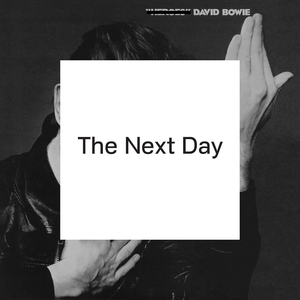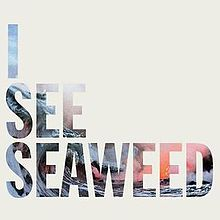
The Next Day by David Bowie
This week I am listening to “The Next Day” by David Bowie
Somebody needs to think about this stuff...
by justin

The Next Day by David Bowie
This week I am listening to “The Next Day” by David Bowie
by justin
Today I finished reading “Tu te rappelles Bill” by Jean Roba
by justin
Today I finished reading “Lucky Luke #16 – En Remontant Le Mississipi” by Rene & Goscinny
by justin
Today I read a paper titled “On Linear Spaces of Polyhedral Meshes”
The abstract is:
Polyhedral meshes (PM) – meshes having planar faces – have enjoyed a rise in popularity in recent years due to their importance in architectural and industrial design
However, they are also notoriously difficult to generate and manipulate
Previous methods start with a smooth surface and then apply elaborate meshing schemes to create polyhedral meshes approximating the surface
In this paper, we describe a reverse approach: given the topology of a mesh, we explore the space of possible planar meshes with that topology
Our approach is based on a complete characterization of the maximal linear spaces of polyhedral meshes contained in the curved manifold of polyhedral meshes with a given topology
We show that these linear spaces can be described as nullspaces of differential operators, much like harmonic functions are nullspaces of the Laplacian operator
An analysis of this operator provides tools for global and local design of a polyhedral mesh, which fully expose the geometric possibilities and limitations of the given topology
by justin
Today I read a paper titled “Interactive Character Posing by Sparse Coding”
The abstract is:
Character posing is of interest in computer animation
It is difficult due to its dependence on inverse kinematics (IK) techniques and articulate property of human characters
To solve the IK problem, classical methods that rely on numerical solutions often suffer from the under-determination problem and can not guarantee naturalness
Existing data-driven methods address this problem by learning from motion capture data
When facing a large variety of poses however, these methods may not be able to capture the pose styles or be applicable in real-time environment
Inspired from the low-rank motion de-noising and completion model in lai2011motion, we propose a novel model for character posing based on sparse coding
Unlike conventional approaches, our model directly captures the pose styles in Euclidean space to provide intuitive training error measurements and facilitate pose synthesis
A pose dictionary is learned in training stage and based on it natural poses are synthesized to satisfy users’ constraints
We compare our model with existing models for tasks of pose de-noising and completion
Experiments show our model obtains lower de-noising and completion error
We also provide User Interface(UI) examples illustrating that our model is effective for interactive character posing
by justin
Today I watched “Star Trek Into Darkness”
by justin

Innocence Is Kinky by Jenny Hval
This week I am listening to “Innocence Is Kinky” by Jenny Hval
by justin
Today I watched “The Returned”
by justin
Today I finished reading “Makers: The New Industrial Revolution” by Chris Anderson
by justin
Today I read a paper titled “Who is the best player ever? A complex network analysis of the history of professional tennis”
The abstract is:
We consider all matches played by professional tennis players between 1968 and 2010, and, on the basis of this data set, construct a directed and weighted network of contacts
The resulting graph shows complex features, typical of many real networked systems studied in literature
We develop a diffusion algorithm and apply it to the tennis contact network in order to rank professional players
Jimmy Connors is identified as the best player of the history of tennis according to our ranking procedure
We perform a complete analysis by determining the best players on specific playing surfaces as well as the best ones in each of the years covered by the data set
The results of our technique are compared to those of two other well established methods
In general, we observe that our ranking method performs better: it has a higher predictive power and does not require the arbitrary introduction of external criteria for the correct assessment of the quality of players
The present work provides a novel evidence of the utility of tools and methods of network theory in real applications
by justin
Today I read a paper titled “A novel 2.5D approach for interfacing with web applications”
The abstract is:
Web applications need better user interface to be interactive and attractive
A new approach/concept of dimensional enhancement – 2.5D “a 2D display of a virtual 3D environment”, which can be implemented in social networking sites and further in other system applications
by justin
Today I finished reading “V is for Vulnerable: An Alphabet for People Who Want to Make a Difference” by Seth Godin
by justin
Today I finished reading “Game Programming Algorithms and Techniques: A Platform-Agnostic Approach” by Sanjay Madhav
by justin
Today I finished reading “The 4 Disciplines of Execution: Achieving Your Wildly Important Goals” by Chris McChesney
by justin
Today I finished reading “Courtney Crumrin Tales Volume 2: The League of Ordinary Gentlemen” by Ted Naifeh
by justin
Today I finished reading “Courtney Crumrin Tales: A Portrait of the Warlock as a Young Man” by Ted Naifeh
by justin
Today I read a paper titled “Using evolutionary design to interactively sketch car silhouettes and stimulate designer’s creativity”
The abstract is:
An Interactive Genetic Algorithm is proposed to progressively sketch the desired side-view of a car profile
It adopts a Fourier decomposition of a 2D profile as the genotype, and proposes a cross-over mechanism
In addition, a formula function of two genes’ discrepancies is fitted to the perceived dissimilarity between two car profiles
This similarity index is intensively used, throughout a series of user tests, to highlight the added value of the IGA compared to a systematic car shape exploration, to prove its ability to create superior satisfactory designs and to stimulate designer’s creativity
These tests have involved six designers with a design goal defined by a semantic attribute
The results reveal that if “friendly” is diversely interpreted in terms of car shapes, “sportive” denotes a very conventional representation which may be a limitation for shape renewal
by justin
This month I am studying “Photoshop for interior design”
by justin

Trouble Will Find Me by The National
This week I am listening to “Trouble Will Find Me” by The National
by justin
Today I finished reading “Kiss That Frog!: 12 Great Ways to Turn Negatives into Positives in Your Life and Work” by Brian Tracy
by justin
Today I finished reading “Insanely Simple: The Obsession That Drives Apple’s Success” by Ken Segall
by justin
Today I finished reading “Usagi Yojimbo #28: Red Scorpion” by Stan Sakai
by justin
Today I read a paper titled “Haptics in computer music : a paradigm shift”
The abstract is:
With an historical point of view combined with a bibliographic overview, the article discusses the idea that haptic force feedback transducers correspond with a paradigm shift in our real-time tools for creating music
So doing, il shows that computer music may be regarded as a major field of research and application for haptics
by justin
Today I watched “World War Z”
by justin
Today I finished reading “Lucky Luke #31 – Tortillas pour les Dalton” by Rene & Goscinny
by justin
Today I finished reading “Fundamentals of Construction and Simulation Game Design” by Ernest Adams
by justin
Today I finished reading “Lucky Luke #4 – Sous le ciel de l’Ouest” by Morris
by justin
Today I read a paper titled “Random Topologies and the emergence of cooperation: the role of short-cuts”
The abstract is:
We study in detail the role of short-cuts in promoting the emergence of cooperation in a network of agents playing the Prisoner’s Dilemma Game (PDG)
We introduce a model whose topology interpolates between the one-dimensional euclidean lattice (a ring) and the complete graph by changing the value of one parameter (the probability p to add a link between two nodes not already connected in the euclidean configuration)
We show that there is a region of values of p in which cooperation is largely enhanced, whilst for smaller values of p only a few cooperators are present in the final state, and for p \rightarrow 1- cooperation is totally suppressed
We present analytical arguments that provide a very plausible interpretation of the simulation results, thus unveiling the mechanism by which short-cuts contribute to promote (or suppress) cooperation
by justin
Today I read a paper titled “A Spectral Learning Approach to Range-Only SLAM”
The abstract is:
We present a novel spectral learning algorithm for simultaneous localization and mapping (SLAM) from range data with known correspondences
This algorithm is an instance of a general spectral system identification framework, from which it inherits several desirable properties, including statistical consistency and no local optima
Compared with popular batch optimization or multiple-hypothesis tracking (MHT) methods for range-only SLAM, our spectral approach offers guaranteed low computational requirements and good tracking performance
Compared with popular extended Kalman filter (EKF) or extended information filter (EIF) approaches, and many MHT ones, our approach does not need to linearize a transition or measurement model; such linearizations can cause severe errors in EKFs and EIFs, and to a lesser extent MHT, particularly for the highly non-Gaussian posteriors encountered in range-only SLAM
We provide a theoretical analysis of our method, including finite-sample error bounds
Finally, we demonstrate on a real-world robotic SLAM problem that our algorithm is not only theoretically justified, but works well in practice: in a comparison of multiple methods, the lowest errors come from a combination of our algorithm with batch optimization, but our method alone produces nearly as good a result at far lower computational cost
by justin

Doris by Earl Sweatshirt
This week I am listening to “Doris” by Earl Sweatshirt
by justin
Today I finished reading “The Swift Programming Language” by Apple Inc.
by justin
Today I read a paper titled “Fuzzy overlapping communities in networks”
The abstract is:
Networks commonly exhibit a community structure, whereby groups of vertices are more densely connected to each other than to other vertices
Often these communities overlap, such that each vertex may occur in more than one community
However, two distinct types of overlapping are possible: crisp (where each vertex belongs fully to each community of which it is a member) and fuzzy (where each vertex belongs to each community to a different extent)
We investigate the effects of the fuzziness of community overlap
We find that it has a strong effect on the performance of community detection methods: some algorithms perform better with fuzzy overlapping while others favour crisp overlapping
We also evaluate the performance of some algorithms that recover the belonging coefficients when the overlap is fuzzy
Finally, we investigate whether real networks contain fuzzy or crisp overlapping
by justin
Today I finished reading “Lucky Luke #18 – A L’ombre Des Derricks” by Rene & Goscinny
by justin
Today I finished reading “The Power of Self-Confidence: Become Unstoppable, Irresistible, and Unafraid in Every Area of Your Life” by Brian Tracy
by justin
Today I read a paper titled “Optimal Probabilistic Ring Exploration by Asynchronous Oblivious Robots”
The abstract is:
We consider a team of $k$ identical, oblivious, asynchronous mobile robots that are able to sense i.e., view) their environment, yet are unable to communicate, and evolve on a constrained path
Previous results in this weak scenario show that initial symmetry yields high lower bounds when problems are to be solved by deterministic robots
In this paper, we initiate research on probabilistic bounds and solutions in this context, and focus on the exploration problem of anonymous unoriented rings of any size
It is known that $\Theta(\log n)$ robots are necessary and sufficient to solve the problem with $k$ deterministic robots, provided that $k$ and $n$ are coprime
By contrast, we show that four identical probabilistic robots are necessary and sufficient to solve the same problem, also removing the coprime constraint
Our positive results are constructive
by justin
Today I finished reading “Conan #13: Queen of the Black Coast” by Brian Wood
by justin
Today I finished reading “Made to Stick: Why Some Ideas Survive and Others Die” by Chip Heath
by justin
Today I finished reading “So Good They Can’t Ignore You: Why Skills Trump Passion in the Quest for Work You Love” by Cal Newport
by justin

I See Seaweed by The Drones
This week I am listening to “I See Seaweed” by The Drones
by justin
Today I finished reading “The Long Mars” by Terry Pratchett
by justin
Today I finished reading “Klondike” by Morris
by justin
Today I finished reading “The Honest Truth About Dishonesty: How We Lie to Everyone – Especially Ourselves” by Dan Ariely
by justin
This week I am listening to “Muchacho” by Phosphorescent
by justin
I don’t let my wife work with more non-profits than I have World of Warcraft accounts.
As I have reduced the number of World of Warcraft accounts to just five, there are some very disappointed people running non-profits.
by justin
Today I read a paper titled “Effective Mechanism for Social Recommendation of News”
The abstract is:
Recommendation systems represent an important tool for news distribution on the Internet
In this work we modify a recently proposed social recommendation model in order to deal with no explicit ratings of users on news
The model consists of a network of users which continually adapts in order to achieve an efficient news traffic
To optimize network’s topology we propose different stochastic algorithms that are scalable with respect to the network’s size
Agent-based simulations reveal the features and the performance of these algorithms
To overcome the resultant drawbacks of each method we introduce two improved algorithms and show that they can optimize network’s topology almost as fast and effectively as other not-scalable methods that make use of much more information
by justin
Today I read a paper titled “Circadian pattern and burstiness in mobile phone communication”
The abstract is:
The temporal communication patterns of human individuals are known to be inhomogeneous or bursty, which is reflected as the heavy tail behavior in the inter-event time distribution
As the cause of such bursty behavior two main mechanisms have been suggested: a) Inhomogeneities due to the circadian and weekly activity patterns and b) inhomogeneities rooted in human task execution behavior
Here we investigate the roles of these mechanisms by developing and then applying systematic de-seasoning methods to remove the circadian and weekly patterns from the time-series of mobile phone communication events of individuals
We find that the heavy tails in the inter-event time distributions remain robustly with respect to this procedure, which clearly indicates that the human task execution based mechanism is a possible cause for the remaining burstiness in temporal mobile phone communication patterns
by justin
Today I finished reading “The Upside of Irrationality: The Unexpected Benefits of Defying Logic at Work and at Home” by Dan Ariely
by justin
Today I read a paper titled “Simulation Techniques and Prosthetic Approach Towards Biologically Efficient Artificial Sense Organs- An Overview”
The abstract is:
An overview of the applications of control theory to prosthetic sense organs including the senses of vision, taste and odor is being presented in this paper
Simulation aspect nowadays has been the centre of research in the field of prosthesis
There have been various successful applications of prosthetic organs, in case of natural biological organs dis-functioning patients
Simulation aspects and control modeling are indispensible for knowing system performance, and to generate an original approach of artificial organs
This overview focuses mainly on control techniques, by far a theoretical overview and fusion of artificial sense organs trying to mimic the efficacies of biologically active sensory organs
Keywords: virtual reality, prosthetic vision, artificial
by justin
Today I finished reading “A Tour of C++” by Bjarne Stroustrup
by justin
Today I finished reading “Whatcha Gonna Do With That Duck?: And Other Provocations, 2006-2012” by Seth Godin